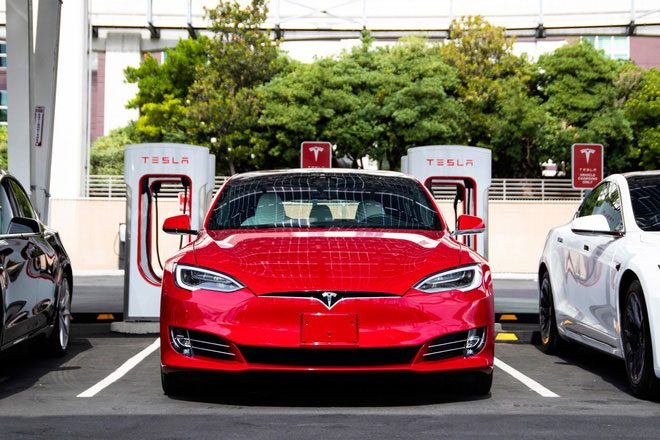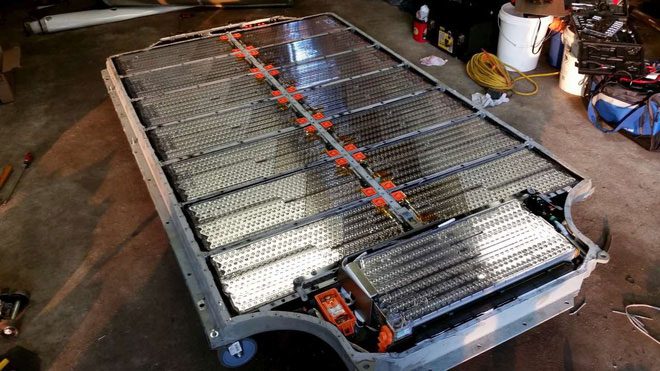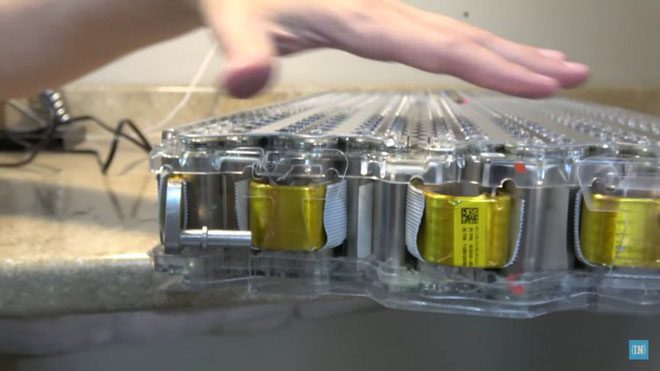In April, Elon Musk promised a battery technology that would allow electric vehicles to operate for up to 1 million miles (equivalent to 1.6 million kilometers) before failing.
At the time he made this statement, the automotive industry expressed skepticism because this technology seemed too good to be true. The figure of 1 million miles is more than double the total mileage that an average Tesla can achieve with current batteries, and with Tesla’s technology at this point, they have already surpassed most electric vehicle manufacturers worldwide.
But it turns out Elon Musk was telling the truth.

Tesla Vehicle.
Earlier this September, a battery research group at Dalhousie University published a new scientific report in The Journal of the Electrochemical Society, describing a battery technology “capable of powering an electric vehicle for 1 million miles.”
Jeff Dahn, the leading scientist behind this research, is regarded as “one of the most distinguished lithium-ion battery researchers,” which certainly speaks volumes. The Dalhousie research team announced that the new battery technology surpasses any similar lithium-ion batteries previously developed, and that it will serve as the “backbone” for autonomous taxis and long-haul trucks, two products currently in development by Tesla.
Another noteworthy point: the research authors do not hail the new battery technology as a breakthrough. They believe it represents a new boundary for batteries, a milestone that other researchers need to strive to surpass. Their scientific report meticulously details the characteristics that distinguish this new technology.

This is the new boundary for batteries, a milestone that other researchers need to strive to surpass.
“All the details about the battery including electrode structure, charging methods, electrolytes, additives, etc., are clearly documented,” the scientific report states. “These details will allow other researchers to reproduce this battery and build upon it to develop their own batteries.”
Why is this significant? In the electric vehicle industry, battery-making is typically a trade secret, as everyone wants to profit from proprietary technology. So why did Dahn’s research team, which signed an exclusive collaboration contract with Tesla back in 2016, decide to publish the recipe for this breakthrough?
According to a former member of Dahn’s team, it is likely because Tesla already possesses a similar battery technology that surpasses even the batteries mentioned in the new research report. Predictably, shortly after the scientific report was published, Tesla filed a patent for a new lithium-ion battery technology that has a structure similar to what was described in the scientific report.
Dahn declined to comment, but the black and white evidence remains clear: Tesla’s new battery patent credits the distinguished researcher as one of the inventors of this new battery.

The report describes a new lithium-ion battery using nickel manganese cobalt oxide (NMC) for the positive electrode and synthetic graphite for the negative electrode. The electrolyte lies between the two electrodes, responsible for transferring lithium ions, made from lithium salt mixed with various other components.
Science has long recognized that NMC and graphite can enhance energy density and lifespan of lithium-ion batteries. How each company mixes electrolytes and new additives is a trade secret, depending on each automotive manufacturer’s specific battery-making processes. Nevertheless, the compounds listed in the research report are all familiar names in the industry. According to Matt Lacey, a lithium-ion battery expert not involved in the research, “there are no secrets in this so-called ‘secret recipe’ that has been published.”
Instead of using some secret component, Dahn and his team optimized the available chemical factors, slightly altering the nano-structure of the positive electrode. Rather than using NMC crystals in the positive electrode, the new battery utilizes larger crystals. According to the researchers, this “single crystal” structure will be less likely to crack during charging; cracks that occur during charging reduce both the lifespan and performance of the battery.

Instead of using NMC crystals in the positive electrode, the new battery uses a larger crystal.
Dahn’s team is responsible for creating a lithium-ion battery that can hold more energy and has a longer lifespan than current batteries on the market. When implemented in electric vehicles, the figures in the scientific report must translate into mileage per charge and the number of charge cycles possible before the battery becomes useless.
Simply put, there is a trade-off between energy density and battery lifespan. The research team had to find a way to achieve both, a task that seems nearly impossible.
The energy density in lithium-ion batteries is one of the key characteristics that define a Tesla electric vehicle. Customers want a car that can travel comfortably on a single full charge, and Tesla’s new models have reached nearly 600 km per charge, far exceeding other electric vehicles on the market.
In reality, surveys show that electric vehicle users only utilize about ¼ of their vehicle’s battery capacity each day, but this equation changes when introducing new variables, such as autonomous taxis or long-haul trucks. Tesla needs a battery technology capable of operating throughout an entire day.
A challenging problem arises: if batteries are continuously charged and discharged at maximum levels daily, the rate of battery degradation increases. The current average lifespan of a Tesla battery, around 480,000-800,000 km, is not sufficient for the two types of vehicles Elon Musk aims to target. That is why they need a battery that can last for 1 million miles before “dying.”

As early as next year, Tesla will unveil new electric vehicles with more powerful batteries than ever.
Shirley Meng, who runs the Energy Storage and Conversion Laboratory at the University of San Diego, stated that many electric vehicle companies are striving to find batteries with higher nickel content than what is described in Dahn’s scientific report. By doing so, they aim to increase the energy density of the batteries. Professor Meng mentioned that the next step will be to “integrate” design with high energy density and the optimal mixing of electrolytes.
It remains unclear whether the formula from Dahn’s research team will be the technology that the electric vehicle industry, and the energy sector as a whole, has been waiting for.
But let’s keep it simple: as early as next year, Tesla will unveil new electric vehicles with more powerful batteries than ever before.




















































